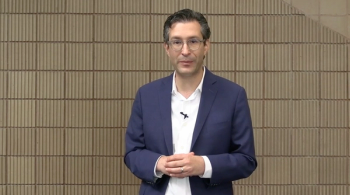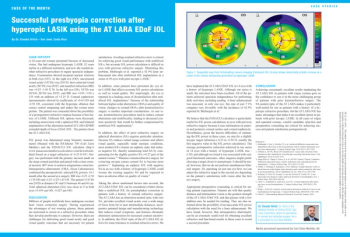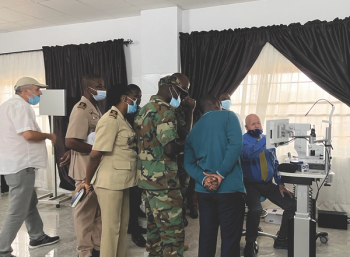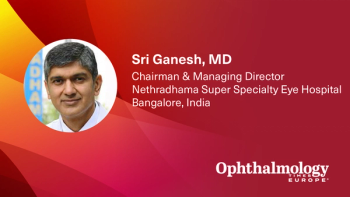
Dr Edmund Arthur shares his research on the early detection of diabetic retinopathy in underserved communities at this year's ARVO meeting.

Dr Edmund Arthur shares his research on the early detection of diabetic retinopathy in underserved communities at this year's ARVO meeting.

Dr T.Y. Alvin Liu talks about predictive AI and its uses in ophthalmology and screening of the eyes at this year's ARVO meeting.

Dr Carl Danzig, MD, FASRS, spoke at this year's ARVO meeting on the post hoc analysis for the GATHER trials regarding vision loss and patients receiving ACP 2/mg versus sham.

Dr Caroline Baumal talks about Apellis' presentations focusing on visual function, imaging and artificial intelligence at this year's ARVO meeting.

Dr Deborah Ferrington talks about her ARVO presentation on using human donor tissue to identify the mechanism responsible for the death of the retinal pigment epithelium.

Former smokers were at higher risk of having to undergo surgery for TED in a recent study, but the risk was lower than that associated with current smoking.

A recent study aimed to set the record straight on the occurrence of retinal vein occlusions (RVOs) following messenger RNA COVID-19 vaccinations.

The programme includes thousands of poster and paper presentations by up-and-coming vision scientists and world leaders in their respective subspecialties.

The host city of New Orleans, Louisiana, US, is replete with old world charm and ambiance and can satisfy any sightseeing, gastronomic and musical appetites.

Findings from a recent study suggest that AO retinal imaging has the potential to become a sensitive marker for MS.

Weighing the pros and cons of anti-VEGF drugs and improved visualisation of abnormalities in ROP


The spherical equivalent was significantly more myopic in the eyes treated with laser in a recent study.

A research team of scientists from a trio of European universities, led by a Northumbria University academic, has received funding to research age-related macular degeneration.

The atropine drops did not cause significant changes in the near vision or the pupillary size, according to study investigators.

The Eye Rubbing Cycle Study yields cautions for patients with keratoconus and ocular surface disease.

Having this predictive ability is important because it is difficult to predict patients’ progression to a specific level of disease severity.

Horus will increase Iluvien’s commercial presence with Nordic retinal specialists.

Novel treatment results in macular hole closure.

On a recent trip to Togo, West Africa, my colleagues and I taught local ophthalmologists to perform selective laser trabeculoplasty in a model that we hope to see replicated throughout the region.

Regenerative technologies are providing an influx of options.

Patient centricity an important driver in topical development.

The various aspects of home monitoring for patients with age-related macular degeneration are discussed in this point/counterpoint by Prof. Rufino Silva, University of Coimbra / Coimbra Hospital and University Centre, Portugal, and Univ.-Prof. Dr. med. Robert P. Finger, PhD, Department of Ophthalmology, University of Bonn, Germany, during the 14th annual Congress on Controversies in Ophthalmology in Lisbon, Portugal.

Pedro Fonseca, MD, Coimbra Hospital and University Centre, Portugal, and Andrew G. Lee, MD, Blanton Eye Institute, Houston Methodist, Texas, United States, discuss the various pros and cons of offering teprotumumab for all patients with thyroid eye disease.

In a keynote lecture at the 14th Annual Congress on Controversies in Ophthalmology in Lisbon, Hendrik Scholl, MD, co-founder and director of the Institute of Molecular and Clinical Ophthalmology Basel, discussed its mission to unravel the mysteries of vision and human eye disease.

Adequate assessment and estimation of residual visual function are important clinically.

Researchers cite persistent prosopagnosia in the case of a 28-year-old woman.


